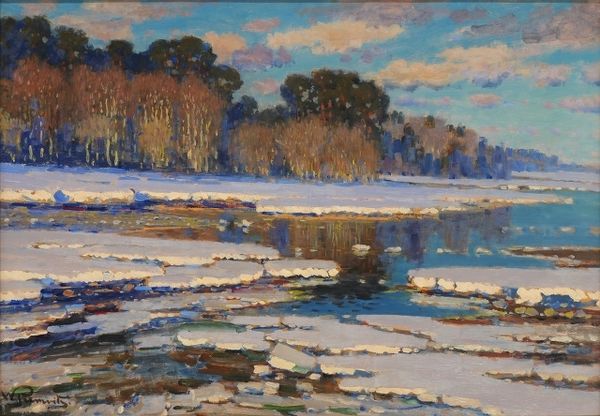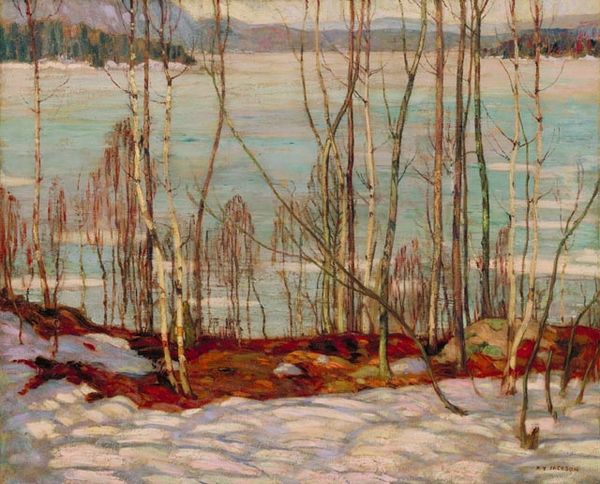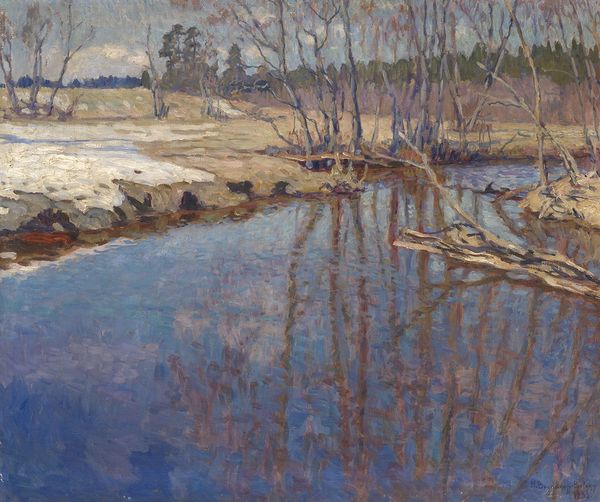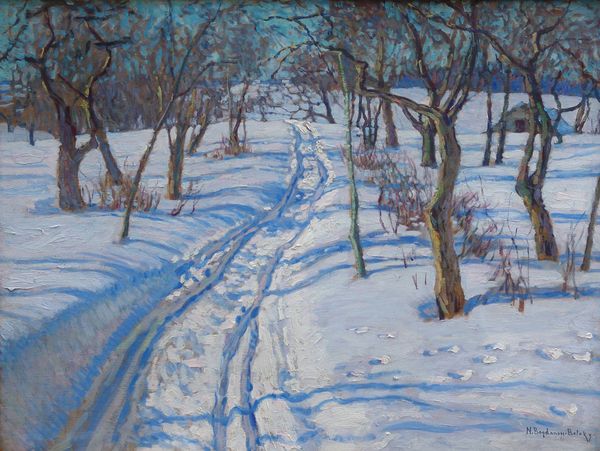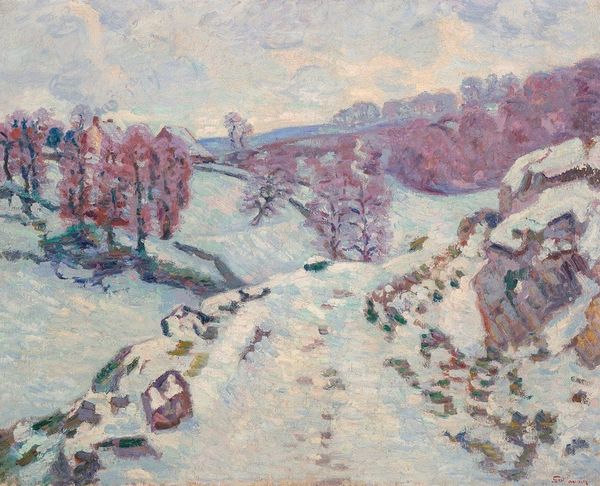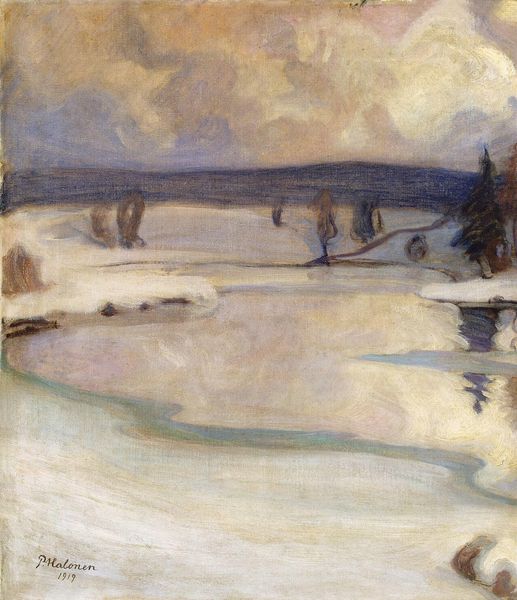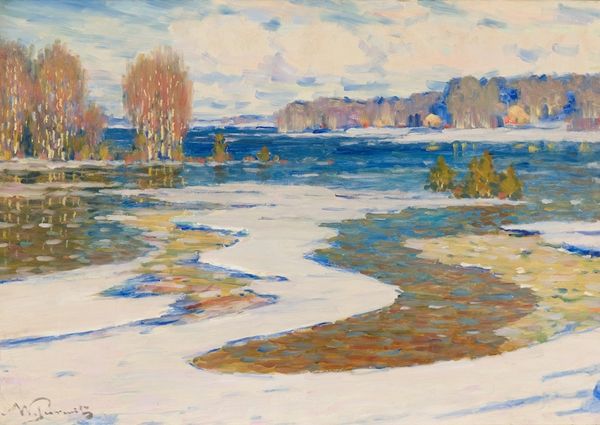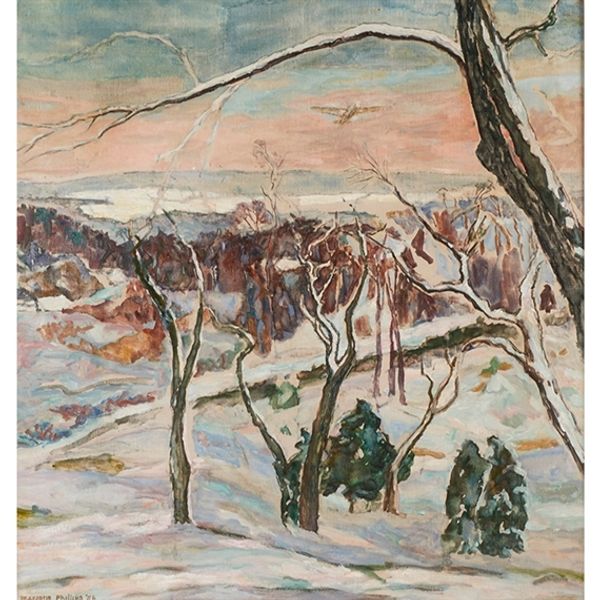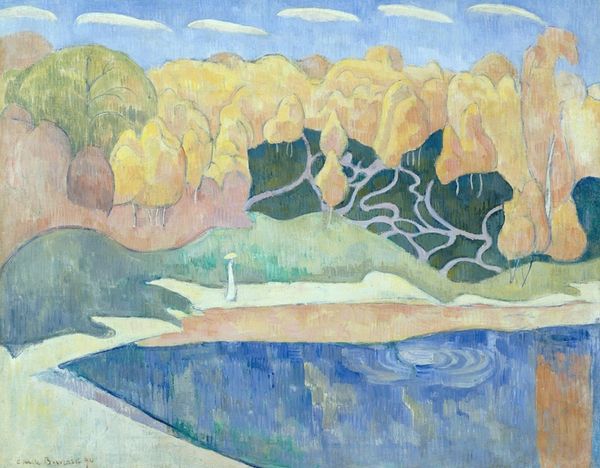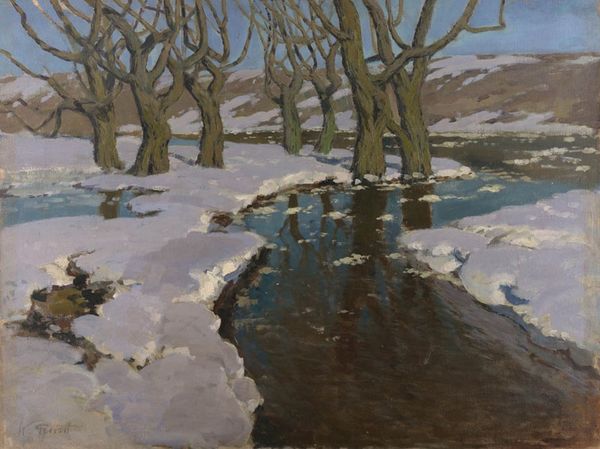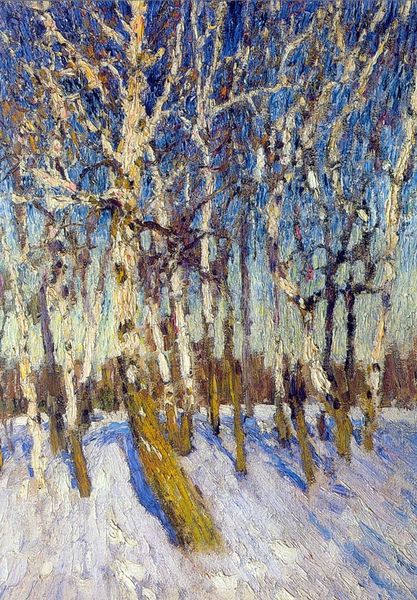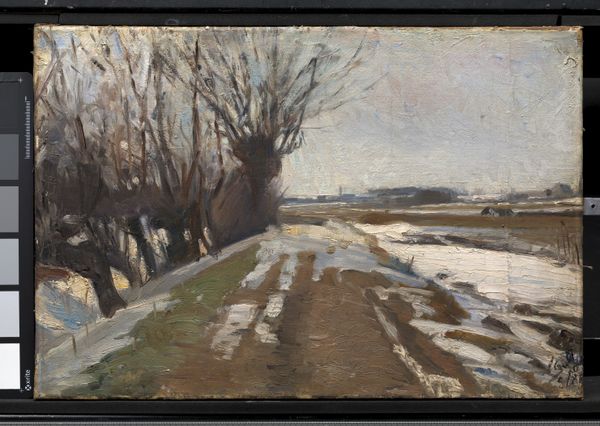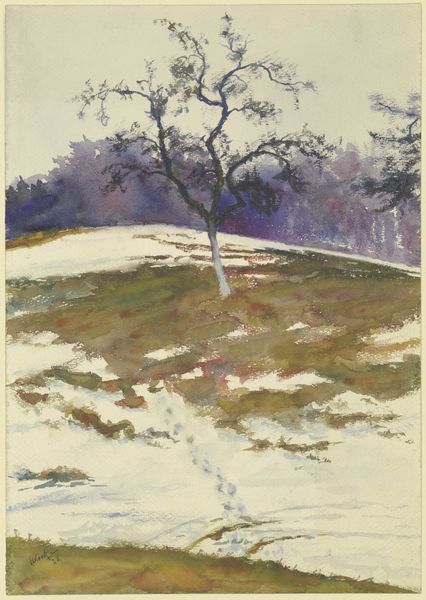
tempera, painting, plein-air, oil-paint, impasto
#
tempera
#
painting
#
impressionism
#
impressionist painting style
#
plein-air
#
oil-paint
#
landscape
#
impressionist landscape
#
possibly oil pastel
#
oil painting
#
impasto
#
water
Dimensions: 48 x 42.5 cm
Copyright: Public domain
Editor: This is “Kevättulva Tuusulanjärvellä” – or “Spring Flood on Lake Tuusula,” painted by Eero Järnefelt, possibly using tempera, maybe plein-air oil paints. The overall feeling is one of cold dampness. The muted colors and bare trees contribute to a somber mood. What's your take on this work? Curator: Järnefelt was painting during a period of intense national romanticism in Finland. This seemingly simple landscape actually plays a role in constructing Finnish identity. Consider how artists at the time were looking to the Finnish landscape, often depicted realistically, as a symbol of the nation's unique character. The very act of painting en plein air – outdoors, directly from nature – could be seen as a political statement, aligning the artist with the authentic Finnish experience. Does this context shift how you view that initial feeling of "cold dampness?" Editor: It does. Knowing it connects to Finnish identity adds a layer I hadn't considered. I guess I was so focused on the browns and greys and how they evoked a sense of early spring thaw. Is the lack of vibrant color perhaps another statement about the perceived simplicity or resilience of the Finnish people? Curator: Precisely! The subdued palette, avoiding romantic idealization, arguably promotes a specific image tied to the period's sociopolitical currents. We can examine its exhibition history, critical reception, and even Järnefelt's personal connections to cultural movements to flesh this out. Were there specific artistic groups championing nationalistic themes that he might have aligned with? Editor: Good question! I’ll have to research the artistic circles he moved in to understand that connection better. Curator: Exactly. By looking at the institutional support and cultural discourse around landscape painting at the time, we can unravel how artworks like this one performed their nationalistic functions. Editor: This painting becomes far more complex and loaded with meaning than I initially realized. Curator: And that's the fun of it – art doesn't exist in a vacuum. Understanding its historical and cultural context reveals layers that enrich our experience and challenge our first impressions.
Comments
No comments
Be the first to comment and join the conversation on the ultimate creative platform.
